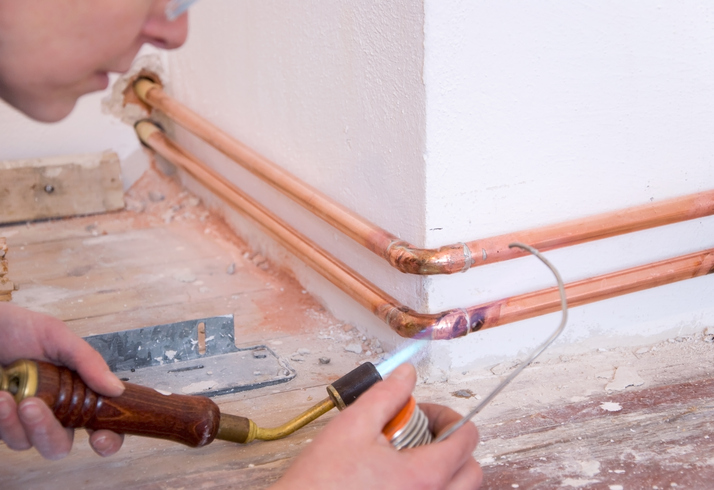
HVAC Gas Pipefitter
In the HVAC world, pipefitters are responsible for putting together much of the infrastructure that handles the feeding and distribution of big industrial and commercial HVAC units. Water and gas supply lines have to be laid in to the units, with steam or hot water (in the case of hydronic systems) is then carried out.
Some systems use even more exotic fluids and gases, such as ammonia or propane, and those, of course, rely on secure, leak-proof piping too.
No matter what it is, if it can flow, pipefitters have probably built a system to handle it at some point.
The Critical Work Pipefitters Perform in HVAC Projects
Pipefitting involves a lot of different ways of putting pipe together. Fitters may have to cut threads on custom installations so pipes can be joined together, but they also have to become experts at several other joining and fitting methods:
Some of these methods, although ancient, require a high degree of skill that can’t be—and usually is not—taught in any classroom. Only training and practice under the watchful eyes of master tradesmen ensures these skills are carried on at a high standard.
Unlike many HVAC careers, pipefitters generally don’t need to worry at all about customer service. If you’re the type of guy who likes to throw on a welding hood and forget the outside world exists while you’re getting the job done, pipefitting will be a good fit for you. People skills definitely come in second place to a good work ethic and job skills.
Fitters work in all sort of piping materials, including:
Each of these types of material has different ways of being connected and shaped, and one or the other may be best for different applications. Pipefitters have to know all about those materials, their benefits and drawbacks, and often something about what is running through them, whether it’s raw sewage or explosive propane gas.
The work happens both on job sites and in fabrication shops.
Preparing for a Career as a Pipefitter
Math and geometry skills are must-haves for pipefitters. Visualizing how pipes will be routed through a space and calculating how to cut and join sections takes a mind that is quick with numbers. Also important is the ability to make calculations regarding drop and rise in a system.
Although it is up to other HVAC technicians to calculate pressure and rate requirements in heating and cooling systems, they depend on pipefitters to install pipe that will effectively carry the contents around the building. The angle over distance can be crucial, and involves math for it be calculated accurately.
Picking up the ability to read blueprints and construction plans can also be important.
Many HVAC trade school and community college programs cover these skills, but usually not to the degree that is necessary to get a job in the field.
Apprenticeship
This makes it a lot more common for guys to take the apprenticeship route into the trade. UA (United Association), the pipefitters/steamfitters/gasfitters union, offers programs that typically run to around five years in length and offer a combination of classroom work and on-the-job training to both teach the right skills and ensure that apprentices develop a practical understanding of how to use them.
These apprenticeships involve working under the supervision of expert journeymen or master craftsmen on real jobs, where the apprentice works progressively to master more and more advanced skills and responsibilities until the apprentice is rated a journeyman.
Industry Certification
The National Center for Construction Education and Research (NCCER) offers a credential called the Certified Plus that is becoming a popular qualification for pipefitters. The certificate can be earned simply by passing a written exam on:
More advanced levels of certification are also available.
Some pipefitters can work without licensing, but in many states, if you are going to be working on piping carrying live steam, explosive gases, or other high-pressure materials, you will likely have to get a state or municipal license.
In most cases, the requirements for this license will be met by completing an apprenticeship program. In some cases, other education can be substituted for the work hours that may be required. In New Hampshire, for example, a NATE (North American Technical Excellence) or CETP (Certified Employee Training Program) certificate are required to become licensed as a gas fitter.
There are also speciality certifications for certain categories of pipefitter, such as the UA Nuclear Mechanic program for fitters working on nuclear power systems.

